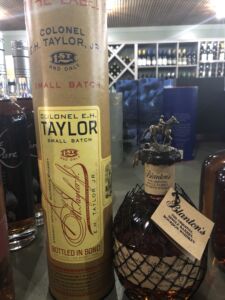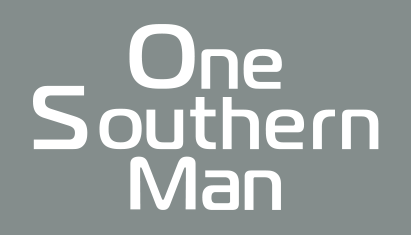Southerners often use the terms “whiskey” and “bourbon” interchangeably. Admittedly, I’ve broken this cardinal rule of spirits. Don’t worry, you won’t face any civil or criminal charges. It is helpful to know the difference between bourbon and whiskey the next time the subject arises at your next dinner party, tailgate, or an after-work mixer, so you can come off looking like an educated and informed southern gentleman.
Simply stated, all bourbons are whiskeys, but not all whiskeys are bourbons.
A Brief History of Bourbon
The history of bourbon and American whiskey began in the late 1700s when westbound British, Irish, and Scottish settlers made whiskey. Evan Williams opened the first commercial distillery in Kentucky in 1783 on the banks of the Ohio River.
Bourbon is a type of American whiskey thought to originate from Bourbon County, Kentucky. Although an early law mandated that bourbon be made in Kentucky, today bourbon is made in many states.

Old Bourbon County, Kentucky
In 1785, the county was formed. However, the “Old Bourbon County” is now comprised of 14 counties, and the current Bourbon County doesn’t produce much of the product. Most of the bourbon produced in Kentucky today is around the Louisville, Frankfurt, and Bardstown areas.
RELATED: How to Score Premium Allocated Bourbons
Historians say a Baptist minister named Elijah Craig, opened a distillery in Georgetown, Kentucky, and “invented” bourbon by aging the corn whiskey in barrels. Whiskey was first advertised as bourbon in an 1821 newspaper ad in Paris, Kentucky and in 1840, the whiskey produced in the original Bourbon County was so named.
In the late 1870s, bourbon whiskey was shipped down the Ohio River – better known today as the Mississippi River – and sold to the French settlers on New Orleans’ Bourbon Street. They liked bourbon because it tasted similar to the Cognac they enjoyed from their native country.
In 1964, the US Congress and the Bureau of Alcohol, Tobacco, Firearms, and Explosives, established federal regulations for producing the spirit.
Examples of popular bourbons include Blanton’s, Woodford Reserve, Michter’s, Knob Creek, Buffalo Trace, Bulleit, Weller, Four Roses, Van Winkle, Col. E.H. Taylor, and George T. Stagg.

Bottles of E.H. Taylor and Blanton’s at Cork & Barrel 30A in Rosemary Beach, FL (OneSouthernMedia/2021)
The ABCs of Bourbon
American – It must be made in the United States.
Barrels – It must be aged in new, charred American white oak containers. Everyone uses barrels.
Corn – It must be made with a minimum of 51 percent corn.
Distilled – It must be distilled at no more than 160 proof, or 80 percent alcohol.
Entered – It must be entered into the barrel at no more than 125 proof.
Filled – It must be bottled at no less than 80 proof.
Genuine – It must have nothing added to it but water.

Bourbon aging in oak barrels
There are four steps to the bourbon and whiskey-making process before aging. They include:
Cooking
Ground corn is mixed with pure limestone-filtered water and then cooked at a relatively high temperature. The temperature is then lowered, and ground rye and/or wheat is added.
Mashing
After the mixture has cooked, the temperature is lowered again for the addition of barley malt. This begins the mashing process. Barley is malted by moistening the grains until they sprout, which releases an enzyme that converts grain starch into sugars. When the conversion is complete, the mash is transferred to the fermenters.
Fermentation
Yeast is then added to the mash to begin the fermentation process. Each different strain of yeast imparts a distinctive flavor and aroma to the finished whiskey, and each distiller has a preferred strain. Knob Creek uses a proprietary jug yeast that has been the same since the end of Prohibition. The yeast converts the grain sugars into alcohol and carbon dioxide.
RELATED: Best 30A Restaurants to Enjoy In 2021
Distillation
When the fermentation is complete, the mash, now called “distiller’s beer,” is pumped to the still. Inside the tall column still, mash entering from the top meets steam entering from the bottom. The steam vaporizes the alcohol in the mash and carries it out to the top of the still to be cooled and re-condensed. This product of the first distillation is called “low wine,” which is then distilled a second time, yielding a product called “high wine” or “white dog.”
Aging
New whiskey is as clear as water. All of the distinctive color and some of the flavor come from aging in new, charred oak barrels. The longer a bourbon is aged, the more flavor and color it takes from the wood. The charring of the inside of the barrel produces a layer of caramelized sugars in the wood, which slowly dissolve into the resting bourbon.
Other types of Whiskey include Tennessee, Rye, Irish, Scotch, and Canadian.
